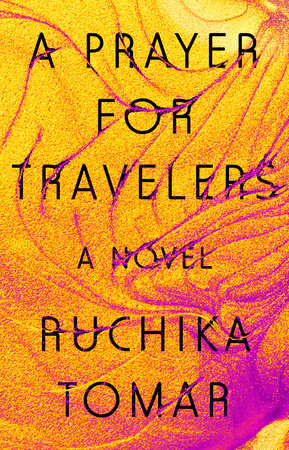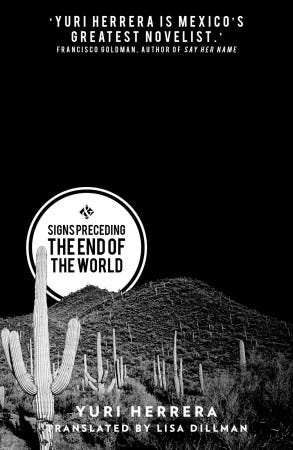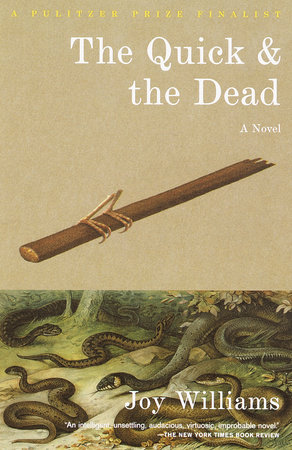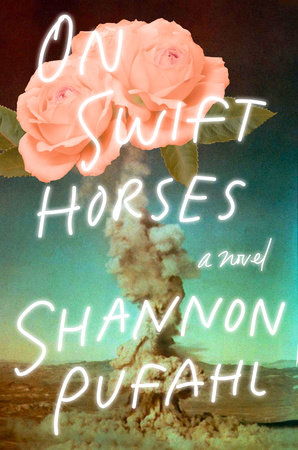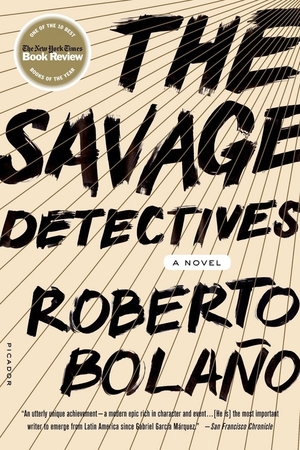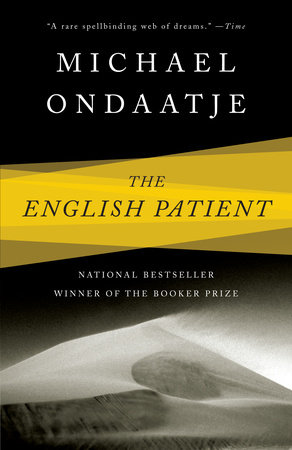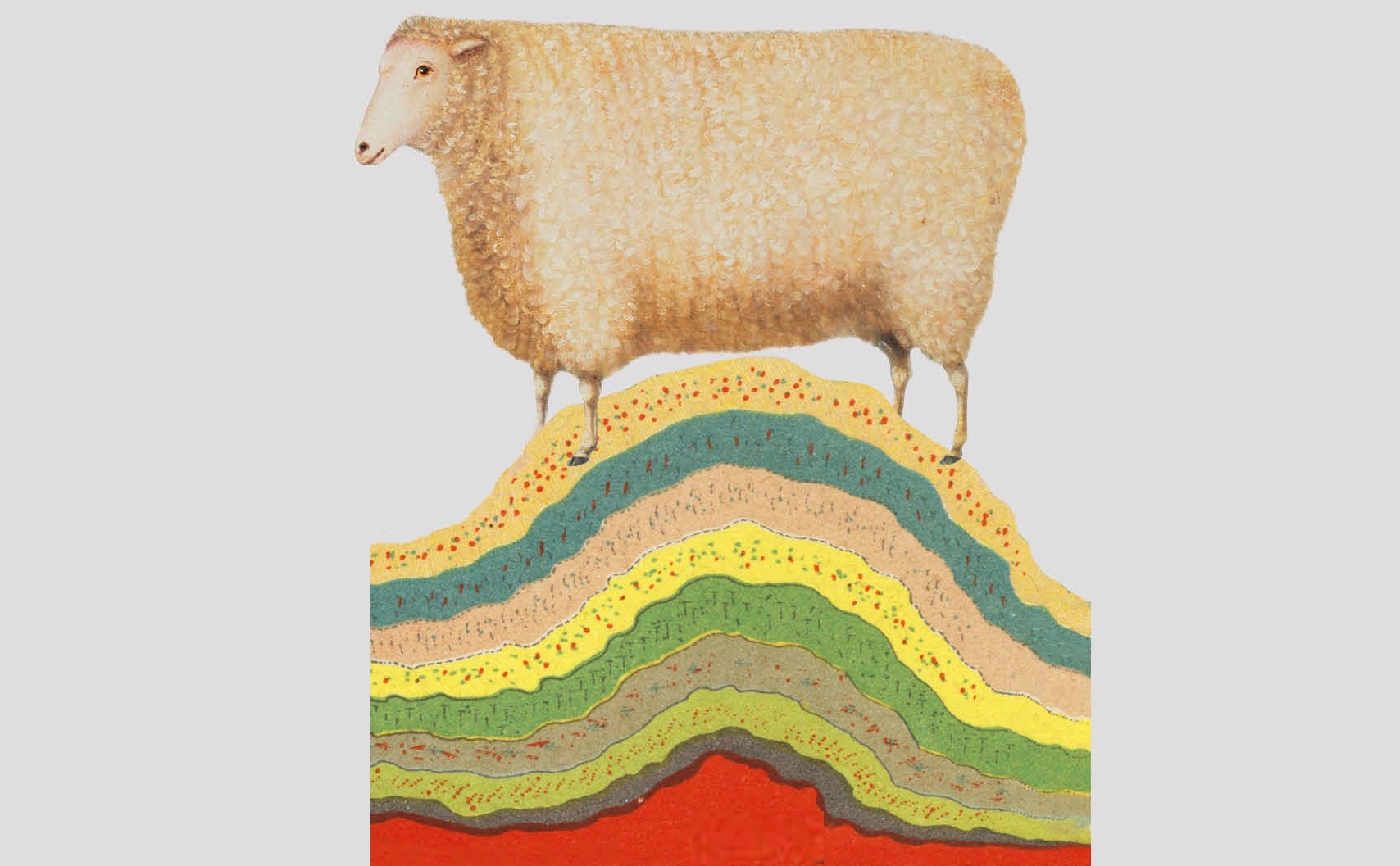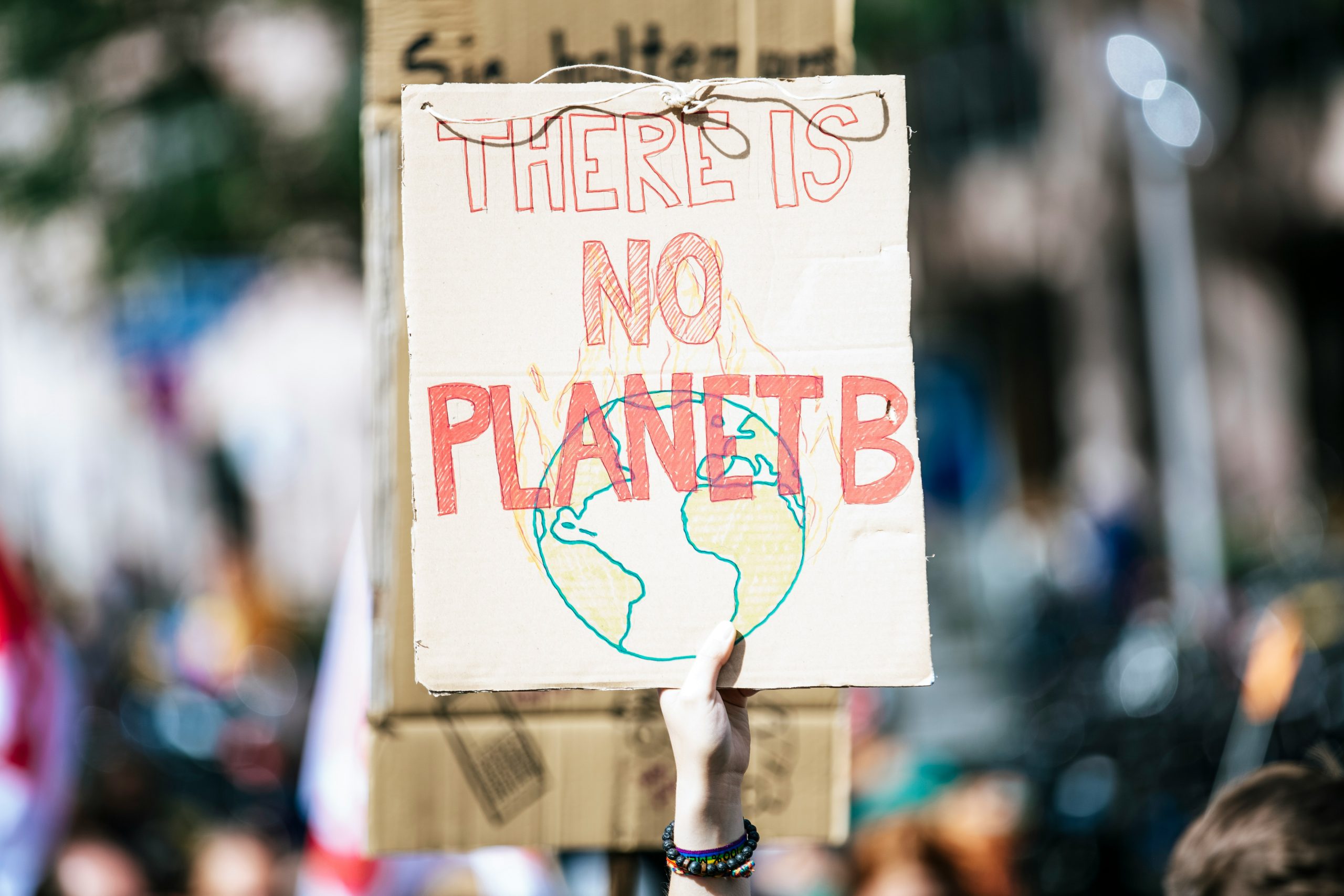Reading Lists
7 Novels Set in Deserts
Ruchika Tomar, author of "A Prayer for Travelers," recommends fiction about beautiful, barren landscapes

I come from Moreno Valley—brown valley—in an area of California known colloquially as the Inland Empire, located three hours from Vegas, and two from the border. In the 80s and 90s, when I was growing up there, the I.E. was a constellation of freeways connecting deserts and meth labs and good dogs and medium people. It holds no relation to the David Lynch movie of the same name.
The Inland Empire is where I first fell in love with dry, barren landscapes and got to know them as the kind of beautiful, brutal places that will grow you right up. We—by which I mean my friends and I—lacked this perspective at the time. We ditched our classes and wore blue mascara daily and fell silent when the principal announced over the PA system that another student died huffing anti-freeze. In eighth grade, our friend’s mother’s meth lab blew up, and the announcement made a 2”x2” square in the back pages of the local paper. In high school, we shared a memorable year in the company of a twitchy ex-con named Worm—but that ended, inevitably, in his violent return to prison.
We spent the rest of our time in Palm Desert and San Bernardino and Indio, dancing the night away at various Indian casinos; we went to sleep in parked cars; we woke up to the sun frying us like eggs in our tin cans. We drove east to Vegas and north to Death Valley, crossing Reno in winter, stopping on the side of the road to buy blankets and fruit. When I finally left the desert, it was very much on purpose, so you can imagine my disappointment when I started writing a novel, only to realize that a part of me longed to return.
They say you can never go home again—and I think that’s true—but artists have always loved the desert for the inescapable fact that it’s blank and pitiless and full of possibility. What is nothing if not the most keenly seductive invitation to anything? It’s the absence of place that honors our most elemental self; it’s the desert’s famine that allows for all sorts of creatures to evolve as brutally and singularly as they must. Perhaps that’s why the stories that often emerge from deserts are often outlaws too, breaking traditional forms and narratives structures, unafraid to invent desperate risks. Many of us are blessed to be in driving distance to the Chihuahuan, the Sonoran, the Great Basin, or the Mojave—and if you are, I hope you’ll visit them while we still can. But if you find yourself out of reach of a great desert, you can always pick up one of these brilliant books and bring the desert home to you.
Signs Preceding the End of the World by Yuri Hererra
On the first page of this slim, powerful novel, we meet our sixteen year old narrator, Makina, who’s charged with hand-carrying a note from her mother in Mexico all the way to her brother in the United States. “I don’t like to send you, child,” Cora tells her, “but who else can I trust it to, a man?” Nope! So Makina sets off alone, first to gather intel for her journey from a series of local jefes, and then, with their blessing, she departs into the desert alone, picking her way towards our inhospitable border, hazarded by numerous mortal and political obstacles on the way. The division of family and the question of true reunification is one Hererra wants us to ponder, while Makina’s heartbreaking passage exposes the vulnerability of bodies and the violent schisms between men, women and country.
The Quick & the Dead by Joy Williams
Alice, Corvus and Annabel are three young women coming of age in a small town in the Arizona desert. The girls spend their time stalking cats, blowing shit up, and being embarrassed by their parents, respectively—pretty true to life, in other words—but the novel’s more crucial enterprise is Williams’ devastating reflection on the banality of death. Among the girls, Alice is the guerrilla environmentalist, Corvus is the grave and solemn orphan grieving over her parents’ death, and Annabel is the late-to-town transplant whose arrival incites our tour of the town’s eclectic personalities and pedestrian violence, a place where roadkill leaves a “rosy kiss on the pavement,” elderly men and women wither “like iguanas” in a nearby nursing home, and vengeful, backtalking ghosts materialize with unsettling aplomb. Williams’ prose is artful and precise, the story is comic and outrageously clever, and the starkness of Williams’ narrative ecosphere exerts an intense pressure on her female characters to transmute their surroundings and become “extraordinary.”
On Swift Horses by Shannon Pufahl
Shannon Pufahl’s On Swift Horses is an elegant, powerful novel about Muriel, a deceptively coy San Diego newlywed (by way of rural, postwar Kansas), and her shrewd brother-in-law Julius, a rambling cardshark betting his life on luck’s mercurial bidding. The two gamblers share an early connection before their fates diverge—Muriel becomes involved in the aggressive, male-dominated universe of horse-racing at Del Mar, and Julius flees to the old Las Vegas, that glamorous, mafia-orchestrated oasis whose surreptitious thrill was once a provisional lapse of repressive post-war social conventions. One of the unique pleasures of Pufahl’s seamlessly-researched novel is the momentary return to a less-excessive American excess —when the purchase of an ocean-proximate California home by regular, hardworking Americans wasn’t a laughable possibility; when Las Vegas had yet to be rebuilt into a 24-hour landlocked Royal Caribbean. It’s the kind of nostalgia that can only be enjoyed from the safe distance of (arguable) progress, especially by all those who were never been invited to partake in America’s middle class comforts. On Swift Horses is a solemn reminder of the resilience of generations of Americans who survived our country’s violent past, a timely reminder of the modern consequences of failing to relinquish its dogged shadow, and a heartbreaking elegy to those who never made it out.
The Savage Detectives by Roberto Bolaño
A novel in three parts: first, “Mexicans Lost in Mexico,” written in epistolary form by the aspiring poet Juan García Madero, who begins his diary with his decision to take a writing workshop at his university. It’s there he first encounters Ulises Lima and Arturo Belano, two second-generation visceral realists, following in the tradition of the original visceral realists, “a Mexican avant-garde group [of] . . . writers or painters or journalists or revolutionaries.” Madero is seduced by Lima’s literary talent and wants to joins the group, despite remaining somewhat unclear who exactly the men are. As he gets to know Lima, Belano and their friends, Lima’s fascination with the original visceral realist movement and it’s founder Cesárea Tinjero evolves.
The second part of the novel is “The Savage Detectives,” comprised of variegated recollections from an array of characters who come in contact with Belano and Lima during their travels from 1976-1996. The third and final section of the novel, “The Deserts of Sonora,” returns us to Madero’s diary in 1976 as he, Lima, Belano drive into the Sonora Desert to search for Cesárea Tinjero. Bolaño loves to play with themes of recursion and doubling, often echoing personalities and settings across his works, and The Savage Detectives can be seen in many ways as the literary precursor to Bolaño’s subsequent masterpiece 2666, but while the two works share some literary preoccupations, The Savage Detectives is singularly concerned with the elliptical nature of time and the purpose of art in the politicized framework of Latin American history. A compulsively readable, structurally innovative novel told in Bolaño’s signature exuberant, roguish prose.
Basin and Range by John McPhee
A stunning work of non-fiction, I can’t imagine more essential reading for our times than John McPhee’s legendary, lyric survey of the United States written through the prism of geological history. McPhee, a prolific journalist whose expertise on a broad range of topics won him a Pulitzer Prize, focuses this particular inquiry on the Western desert “with its welded tuffs a Franciscan mélange (internally deformed, complex beyond analysis), its strike-slip faults and falling buildings, its boiling springs and fresh volcanics, its extensional disassembling of the earth.” McPhee guides his readers through millions of years of “deep time” that have fashioned our most familiar Western landmarks through the pitching shifts of tectonic plates, eroding river currents and massive extinctions of plant and animal life that remain fossilized in our earth’s crust. You’ll leave this book with a deeper appreciation for our ancient planet and her centuries of gracious shelter.
Point Omega by Don DeLillo
I admire Don DeLillo’s work so much that I’d be happy to move inside his intellectually rigorous, doom-obsessed brain for five hours straight—which is, coincidentally, how long it took me to read this slim, dense novel in one sitting. If you’re the kind of person who gets turned on by intelligent, evasive repartee between two loquacious men committed to deploying their own emotional smokescreens, you’ll enjoy this novel that focuses on a scholar-turned-national-war-strategist Richard Elster and a documentary filmmaker, Jim Finley, who wants to make a film about Elster’s role in the (mis)management of the Iraq War.
Shortly after the novel opens, we learn Elster has been elusive about his willingness to be filmed, and Finley has been persistent, so Elster invites Finely to his desert hideaway, alone, so that he can unofficially consider the project. Because Finley is a man, he somehow doesn’t immediately find this request creepy or foreboding, despite the fact that Elster is described as wearing his long grey hair in a single braid, and frequently holds forth on a number of subjects at intense length, including the quality of the desert landscape they’re isolated in together, a place he feels is abortive of natural time, “the minute-by-minute reckoning” of city life. Elster argues that in the desert, “Day turns to night eventually but it’s a matter of light and darkness, it’s not time passing, mortal time. There’s none of the usual terror. It’s different here, time is enormous, that’s what I feel here, palpably. Time that precedes us and survives us.”
By the time Elster’s daughter shows up, you’ll be wondering how many different ways this situation could implode, but you won’t be able to look away, because DeLillo’s sentences always mange to build in on themselves at the same time they bridge out to the reader, collapsing into a singularly momentous experience the reader can’t forget. The usual terror is never DeLillo’s long game—but in Point Omega, as in all his works, DeLillo makes sure to serve up a uniquely American nightmare.
The English Patient by Michael Ondaatje
Arguably the most famous of Michael Ondaatje’s novels, this story opens with Hana, a young Canadian nurse stranded in the bombed-out ruins of an Italian villa during WWII. Hana has remained in the villa long after everyone else has fled to provide care for the English Patient, as he is rather arbitrarily named, a man burned beyond recognition, without face or country, who can recall nothing about who he is beyond a fractured key of memories—a violent plane crash and its subsequent blaze; the dry North African desert where he wakes bewildered and nearly blind, salvaged from the wreckage by Bedouin tribesmen who dress his charred body and carry him between them in a makeshift hammock they move across the dusty landscape.
Hana listens to the patient’s fragmented evocations of the desert as the pair is joined by two other stragglers from the war—Kip, a British Sikh sapper disillusioned with his time in the army, and Carvaggio, a charming criminal and former friend of Hana’s father. The novel’s setting is poignantly charged and the cast of characters are rich and diverse, their discordant backgrounds clashing to reveal the most surprising harmonies—and it’s only Ondaatje’s lush, lyric sentences that feel exotic, begging to be read aloud. This is a novel that meditates on loss, but what it interrogates is identity—who are we without our families, our pasts, our nationalities to shape us? How are we made, and how must we survive? The English Patient maps the delicate bonds and limitations between friends, and explores the “physical and spiritual sense of loneliness” that haunts all human experience.




